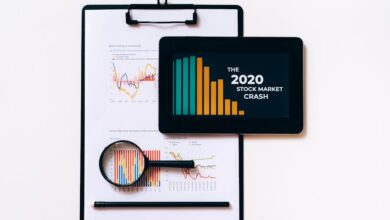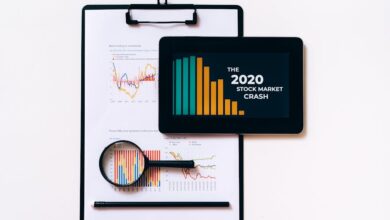Weathering the Storm: Understanding Recession Signals, Investment Strategies, and Business Resilience

In an unpredictable economic landscape, the specter of recession looms large, affecting individuals, businesses, and governments alike. As history has shown, economic downturns can emerge with little warning, leaving many unprepared for the challenges ahead. Understanding the early warning signs of a recession is crucial for both investors and businesses seeking to safeguard their interests. This article will delve into the multifaceted impacts of recessions across various sectors of the economy, exploring how consumer behavior shifts, the role of government stimulus, and the repercussions on global trade and supply chains. We will also highlight effective investment strategies during tough times, drawing lessons from past economic downturns to inform current practices. Finally, we’ll discuss how businesses can not only prepare for but also thrive in the face of adversity. By equipping ourselves with knowledge and strategic foresight, we can navigate the complexities of economic recessions more effectively and emerge stronger.
- 1. Recognizing the Red Flags: Early Warning Signs of an Economic Recession
- 2. Navigating the Downturn: Investing Strategies for Challenging Times
- 3. Resilience in Crisis: How Businesses Can Prepare and Thrive During a Recession
1. Recognizing the Red Flags: Early Warning Signs of an Economic Recession
Recognizing the early warning signs of an economic recession is crucial for businesses, investors, and policymakers. Several indicators can signal a potential downturn, allowing stakeholders to take proactive measures.
One of the most prominent early signs is a decline in consumer confidence. When consumers feel uncertain about their financial future, they tend to reduce spending, which can lead to decreased demand for goods and services. This shift is often reflected in consumer sentiment surveys that gauge public perception of the economy.
Another indicator is a slowdown in key economic metrics such as GDP growth, employment rates, and industrial production. A consistent drop in GDP over two consecutive quarters is a classic definition of a recession, while rising unemployment rates can signal businesses are scaling back operations in anticipation of reduced demand.
Additionally, changes in the stock market can serve as a bellwether for economic health. A significant and sustained drop in stock prices may reflect investor fears about future corporate earnings and economic growth, leading to a pullback in investment.
Interest rates are also telling signs. Central banks may lower rates to stimulate borrowing and spending, but if rates are high and remain stagnant, it can indicate a lack of economic activity. Furthermore, an inverted yield curve, where short-term interest rates exceed long-term rates, has historically been a reliable predictor of recessions, suggesting that investors expect economic slowdown.
Lastly, rising inflation coupled with stagnant growth—often referred to as stagflation—can indicate impending recessionary conditions. When prices increase but consumer purchasing power decreases, it leads to reduced consumption and economic contraction.
By monitoring these indicators—consumer confidence, GDP growth, unemployment rates, stock market trends, interest rates, and inflation—stakeholders can better prepare for potential economic downturns and take appropriate measures to mitigate their impact.
2. Navigating the Downturn: Investing Strategies for Challenging Times
Investing during a recession can be challenging, but with the right strategies, investors can navigate the downturn effectively. One key approach is to focus on defensive stocks—companies that provide essential goods and services, such as utilities, healthcare, and consumer staples. These sectors tend to be less sensitive to economic fluctuations, as their products remain in demand even during tough times.
Another strategy involves diversifying investments. By spreading assets across various sectors and asset classes, such as bonds, real estate, and commodities, investors can reduce risk. Bonds, particularly government securities, often perform well during recessions as investors seek safer havens for their capital.
Investors may also consider dollar-cost averaging, a technique that involves consistently investing a fixed amount of money over time, regardless of market conditions. This approach can help mitigate the impact of volatility and potentially lower the average cost of investments.
Moreover, focusing on companies with strong balance sheets and low debt levels can be advantageous. These firms are typically better positioned to withstand economic downturns and can emerge stronger when the economy recovers.
Lastly, being mindful of the long-term horizon is crucial. While recessions can lead to short-term losses, history shows that markets tend to recover over time. Investors who remain patient and committed to their long-term goals may find themselves well-positioned to benefit from the eventual upturn. By adopting these strategies, investors can navigate the complexities of a recession while safeguarding their portfolios.
3. Resilience in Crisis: How Businesses Can Prepare and Thrive During a Recession
In times of economic downturn, businesses face significant challenges that can threaten their survival. However, those that adopt a proactive approach can not only endure but also thrive. Resilience in crisis involves strategic planning, adaptability, and a focus on maintaining core operations while exploring new opportunities.
First, businesses should conduct thorough risk assessments to identify vulnerabilities within their operations. This includes analyzing cash flow, supply chain dependencies, and customer demand patterns. By understanding these factors, companies can create more robust contingency plans and allocate resources more effectively.
Second, enhancing operational efficiency is crucial. Streamlining processes, reducing unnecessary expenses, and leveraging technology can help businesses maintain profitability even with reduced revenues. Implementing flexible work arrangements and cross-training employees can also ensure that the workforce remains agile and responsive to changing demands.
Moreover, businesses should prioritize building strong relationships with customers and suppliers. During a recession, loyalty can be a significant asset. Companies that communicate openly with their customers about challenges and solutions can foster trust and retain their clientele. Similarly, maintaining strong ties with suppliers can ensure favorable terms and reliable access to essential materials, even when market conditions fluctuate.
Another vital strategy is to diversify revenue streams. Businesses that rely heavily on one product or market may find themselves particularly vulnerable during a recession. By exploring new markets, developing additional products or services, or even pivoting to meet emerging consumer needs, companies can create a cushion against economic shocks.
Finally, investing in employee well-being can enhance resilience. Ensuring that employees feel supported during challenging times can boost morale, productivity, and loyalty. Training and development programs can help staff adapt to new roles and responsibilities, enabling the organization to pivot effectively in response to market changes.
In summary, businesses that prepare for a recession by assessing risks, enhancing operational efficiency, nurturing relationships, diversifying offerings, and supporting their workforce can build resilience. Such strategies not only help them survive economic downturns but also position them for growth when conditions improve.
In conclusion, understanding the complexities of economic recessions is crucial for individuals, businesses, and policymakers alike. By recognizing the early warning signs of a potential downturn, stakeholders can take proactive measures to mitigate risks and adapt to changing conditions. Throughout history, recessions have demonstrated a profound impact on various sectors of the economy, highlighting the importance of tailored investment strategies that can weather financial storms.
Moreover, government stimulus plays a pivotal role in cushioning the blow of economic contractions, providing necessary support for both consumers and businesses. As consumer behavior shifts during these challenging times, it is essential for companies to remain agile and responsive to the evolving marketplace. The effects of recessions extend beyond borders, influencing global trade and supply chains, which underscores the interconnectedness of today’s economy.
Ultimately, the lessons learned from past recessions serve as invaluable guides for navigating future challenges. By implementing effective preparedness strategies, businesses can not only survive but also emerge stronger from economic downturns. In an ever-changing economic landscape, adaptability and foresight will be key to thriving in uncertain times.





